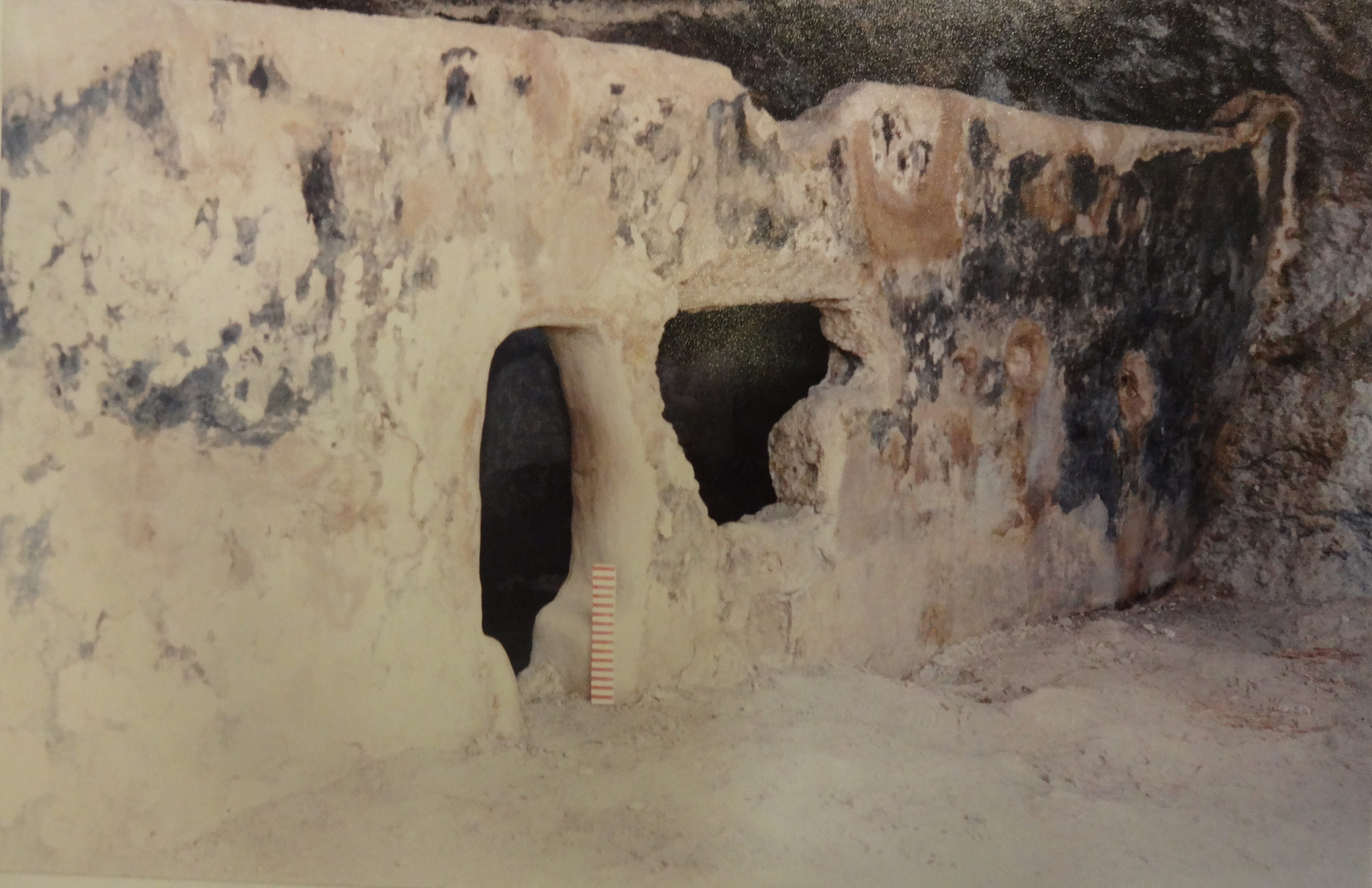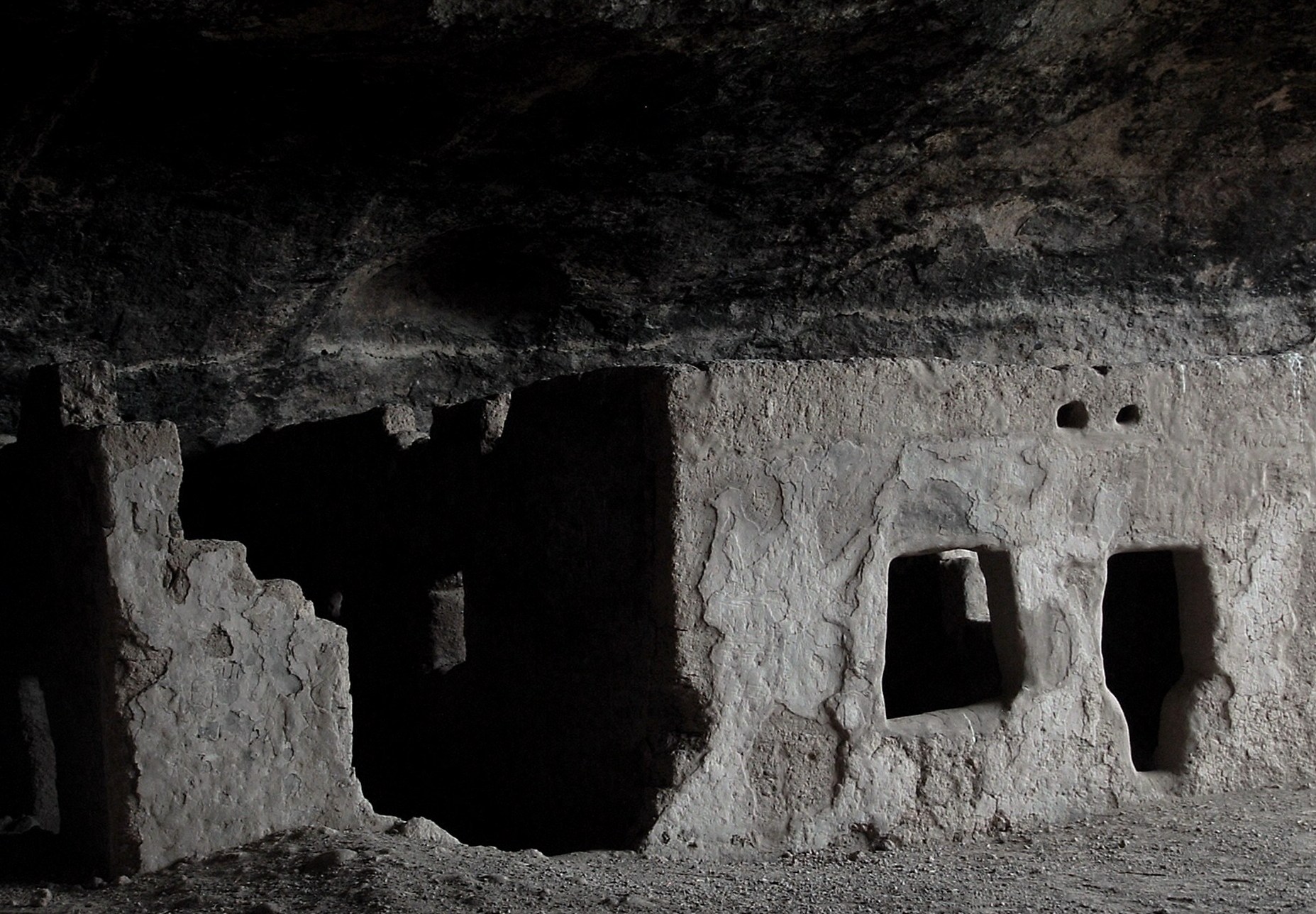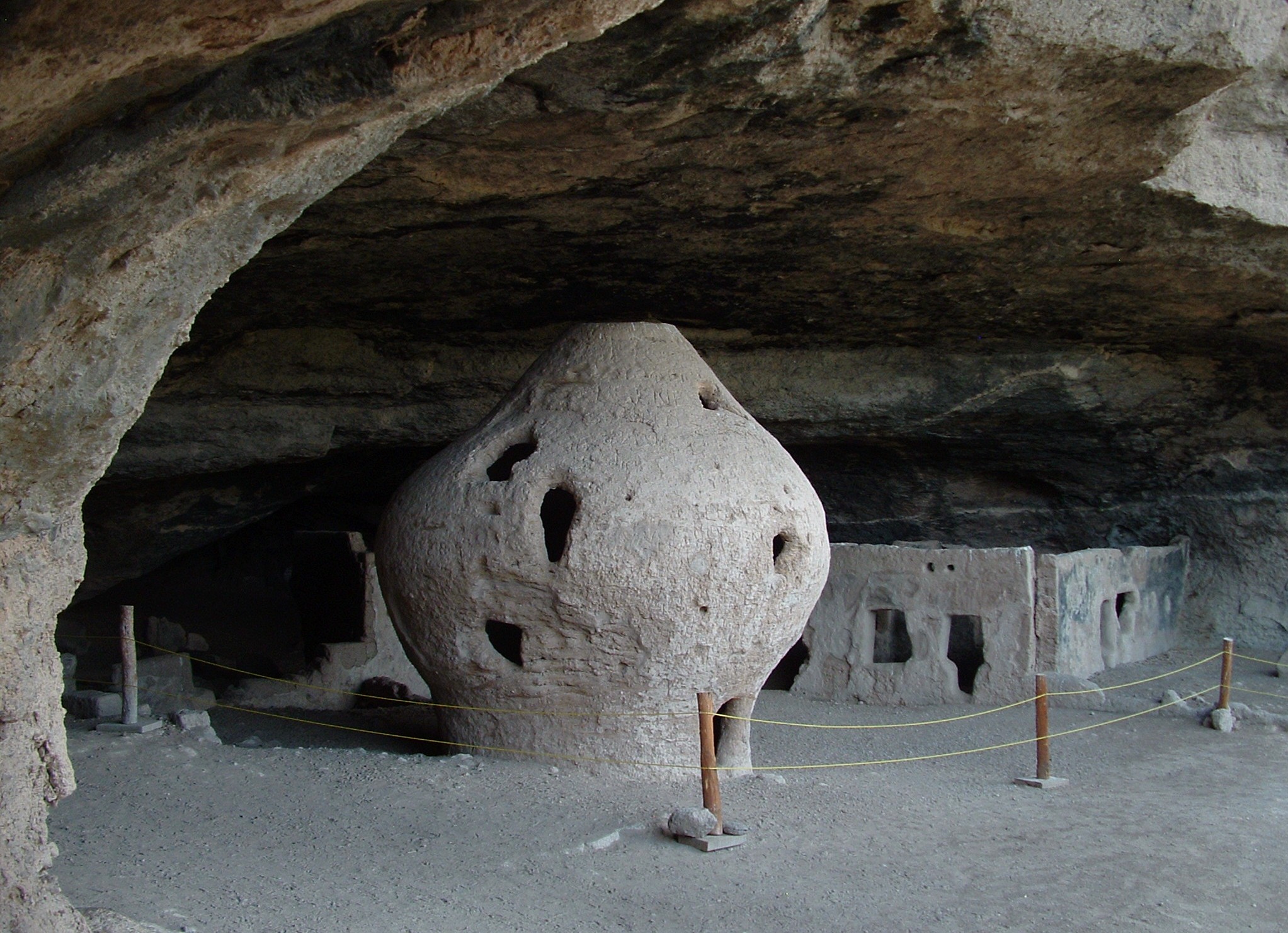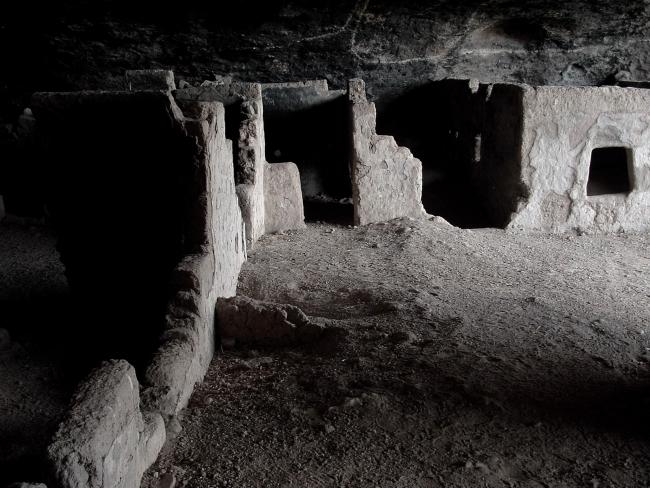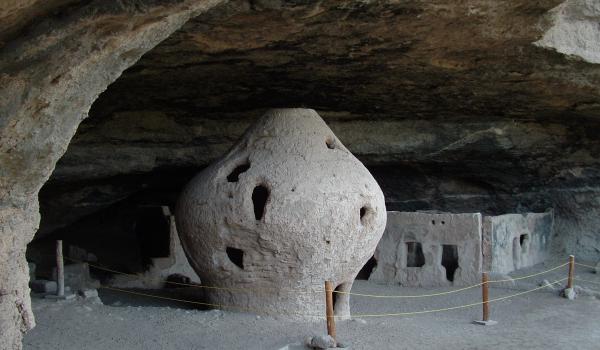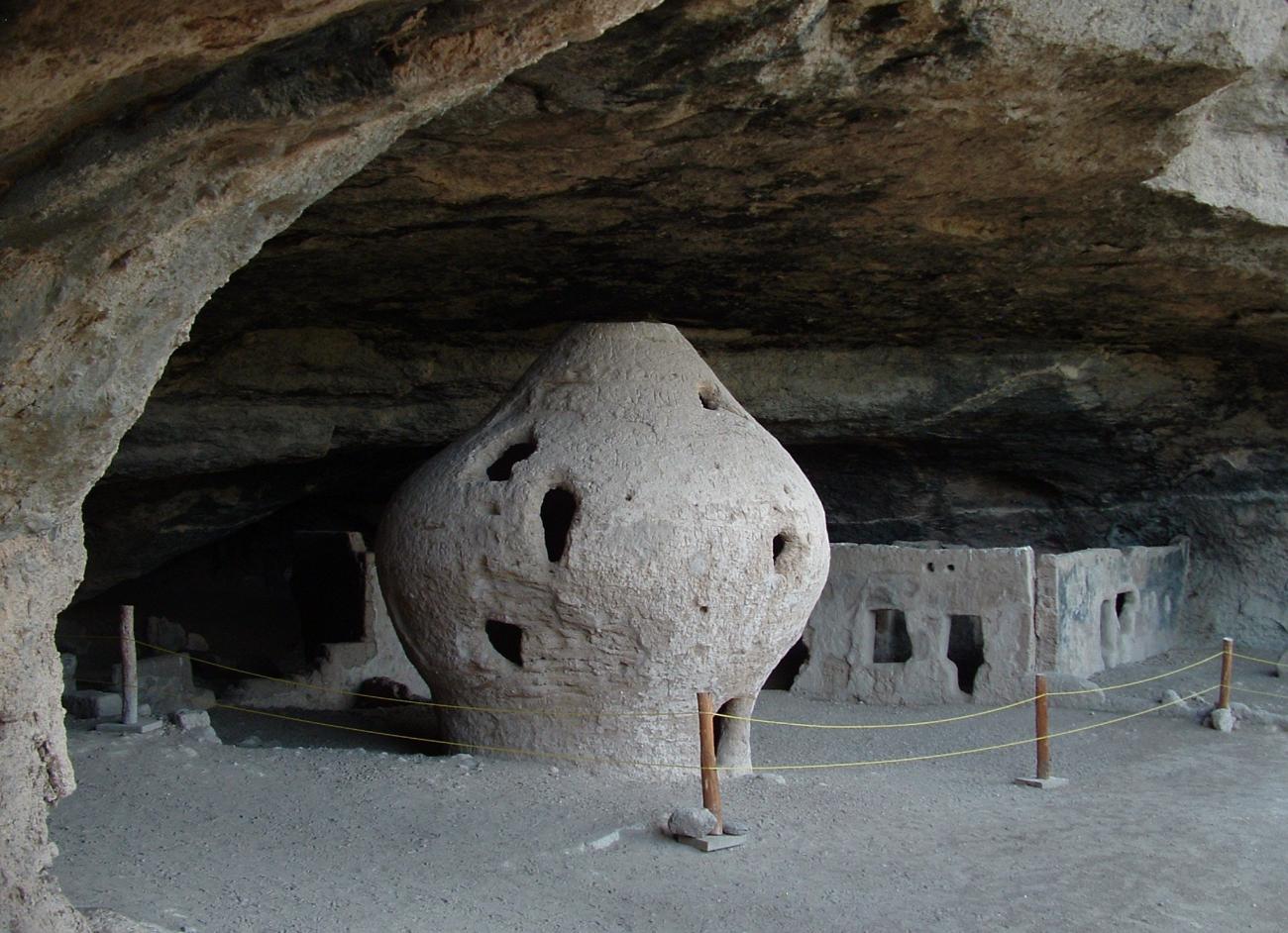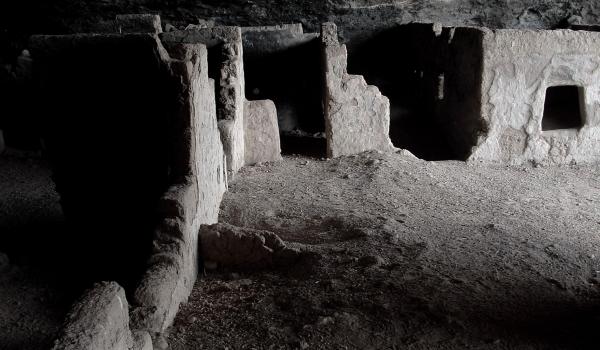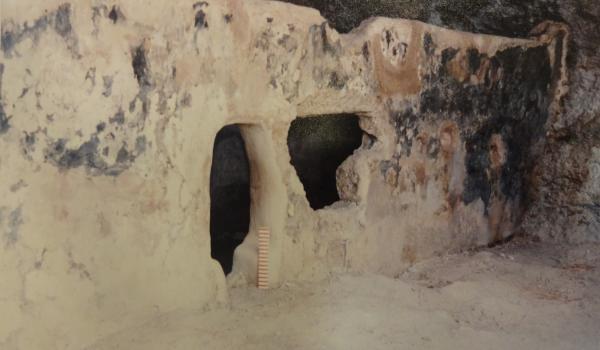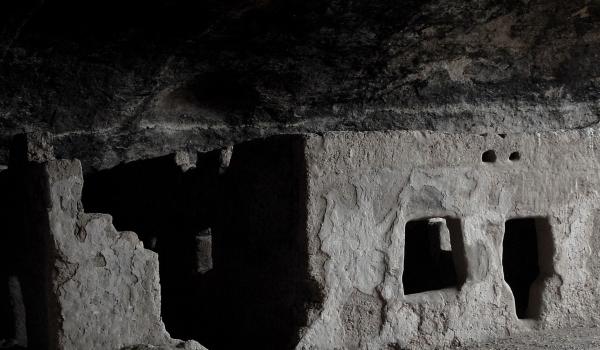The Cueva de la Olla ("Cave of the Cooking Pot") archeological monuments are in the Municipality of Casas Grandes, in Chihuahua, Mexico, situated in the basin of the Piedras Verdes River, a tributary of the Casas Grandes River.
Cueva de la Olla forms part of a small complex in the so-called Valley of the Caves. This complex is located about 30 miles to the southwest of Paquime and the modern town of Casas Grandes, in the first range of the Sierra Madre Occidental.
Just like Cuarenta Casas, this is a site with adobe structures inside caves, where a variety of characteristics of Paquime culture can be identified. This is a site which has been described in various publications, and Robert H. Lister found two human burials on the site.
The archeological site is notable for the presence of a granary of very large dimensions, which is in the shape of a cooking pot. Numerous descriptions have been published, the oldest of which was written by Lumholtz who visited the cave at the end of the nineteenth century.


